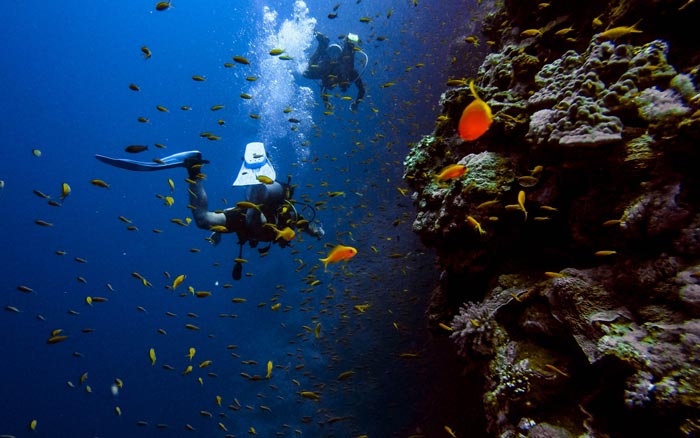Wall Diving: How to Prepare and What to Expect
Wall diving, while often met with mixed emotions, can be a thrilling and enchanting scuba adventure when approached with proper preparation. Contrary to its intimidating reputation, wall diving becomes a mesmerizing experience, offering divers the chance to peer into the deep blue abyss and witness the vibrant beauty of marine life.

In the realm of scuba, a wall refers to a near-vertical underwater surface, whether it’s a rock facade or an expansive growth of hard coral. What distinguishes these walls is that their base extends beyond the depths suitable for recreational diving. Each wall is unique, characterized by its depth, distance from shore, and facade contours, with some plunging straight down, while others form terraced slopes. The intricate passageways, tunnels, and crevices of these walls serve as a habitat for a diverse range of marine life, from sponges and coral to tunicates, mollusks, and various fishes like jacks, rays, and sharks.
Exploring these underwater wonders can be done in two ways—via a guided group dive or independently with a buddy. For beginners, a guided tour is recommended, offering a worry-free experience with dive guides leading and trailing the group, especially in challenging passageways.
If opting for an independent exploration, divers must not only be aware of depth, air supply, and bottom time but also conduct thorough dive planning and navigation. Understanding the specific features of the wall, such as starting depth and potential overhead environments, is crucial. As a general rule, descend to the maximum planned depth and gradually ascend while exploring the wall.
Wall diving locations are often favored in clear, warm tropical waters with diverse marine life. Popular sites include Porto Valitsa in Kassandra Halkidiki, Small Canyon in Skopelos, Ksopetres Agios Nikolaos Crete, Pentanissos Wall & Caverns in Lindos Phodos, every single island in Greece also offer impressive vertical facades.
While wall diving doesn’t necessitate special training, divers should possess good fitness and master basic scuba skills. Some walls may require dives deeper than 60 feet, prompting the need for a deep diver specialty course. Buoyancy control is critical, as the lack of a reference point at the bottom requires careful adjustments during descent and ascent.
The buddy system is crucial in wall diving, necessitating clear communication, agreement on depth and bottom time, and staying close to each other. Awareness of currents is vital, with some walls suitable for drift dives where the current guides the diver. Divers should be cautious of strong currents, like upwellings and downwellings, which can be navigated by adjusting buoyancy and swimming diagonally.
In terms of equipment, alongside standard gear, divers are advised to carry a dive light, safety signaling devices, and alternate air supply. These additions enhance safety and preparedness, allowing divers to explore the intricate details of the wall.
In conclusion, wall diving demands specialized skills, including deep, boat, and drift diving. However, novices need not master all these specialties before embarking on their first wall dive. By selecting an appropriate location, honing basic skills, and perfecting buoyancy control, divers can embark on a thrilling wall diving adventure.
Kind Regards to Avin Perets for sharing the photo

